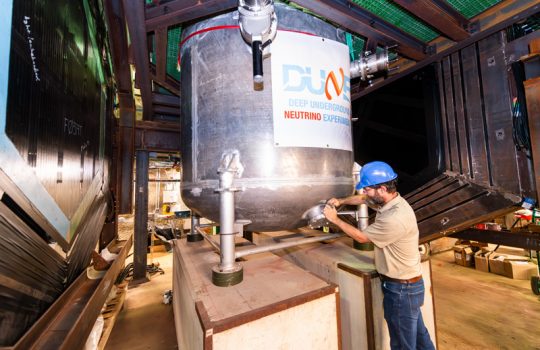DUNE scientists observe first neutrinos with prototype detector at Fermilab
The prototype of a novel particle detection system for the international Deep Underground Neutrino Experiment successfully recorded its first accelerator neutrinos, providing a first look at the ability of this innovative technology to handle large numbers of the mysterious particles’ interactions.

